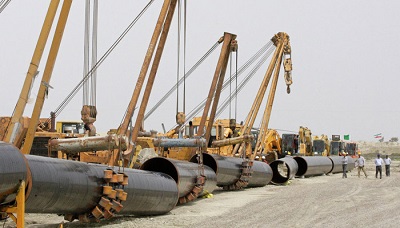 Friday, July 26, 2024
Friday, July 26, 2024  Friday, July 26, 2024
Friday, July 26, 2024 
Got news? Next submission deadline is Friday at 5:00 p.m.
Click here to submit YOUR news

B.C.’s trades sector is confident most of the thousands of workers required to build and operate the province’s first major LNG export facility will come from within the province.
LNG Canada’s $40-billion investment in a liquefied natural gas export terminal in Kitimat, B.C, and a 670-kilometre pipeline from Dawson Creek, is expected to generate roughly 10,000 jobs by 2021.
The joint-venture has agreed to place priority on local and B.C. hiring and has conditionally awarded a $620-million contract to work with Indigenous businesses in northern B.C. for the pipeline.
But some critics have questioned whether B.C. has the skilled labour supply needed to take full advantage of the touted economic benefits, which the government has said are a worthy tradeoff for the increase in carbon emissions the plant will bring.
Tom Sigurdson, executive director of the B.C. Building Trades Council, says the province’s workforce is ready.
“We may have to turn to other western provinces to get some of the trades, but for the most part I’m pretty confident that we’ll be able to supply the vast majority of the skilled labour force out of British Columbia,” Sigurdson said.
Some temporary foreign workers with specific expertise in LNG may be required when the plant goes into operation and about 950 more jobs come into effect, he added.
“I see that for the short term as being very temporary and in supervisory roles. We should be able to scale up a workforce sufficient enough that they will be able to do the plant operations.”
One reason B.C. is prepared is because planning for the construction boom that was expected to come with LNG started years ago when hopes were high in the province, said Sigurdson, who sat on a provincial LNG working group back in 2013.
At that time, it was hoped two major LNG facilities would be under construction at the same time, and there were fears B.C.’s labour force would fall short and large amounts of temporary foreign workers may be needed.
“We had a very real concern about skilled labour supply,” he said.
It took years longer than expected for B.C. to see a major LNG investment, but in that time labour market conditions have changed, in part due to downturns in Alberta’s oil patch and in Saskatchewan’s uranium industry, Sigurdson said.
Watch our video and learn more about the benefits of joining Construction Links Network – the peer-to-peer network sharing platform for the construction, building and design community.
Press Releases | Project Updates | New Appointments | Awards & Milestones | Company News | New Products/Services | Brochures | Videos | Infographics | Blog Sharing | Events and More